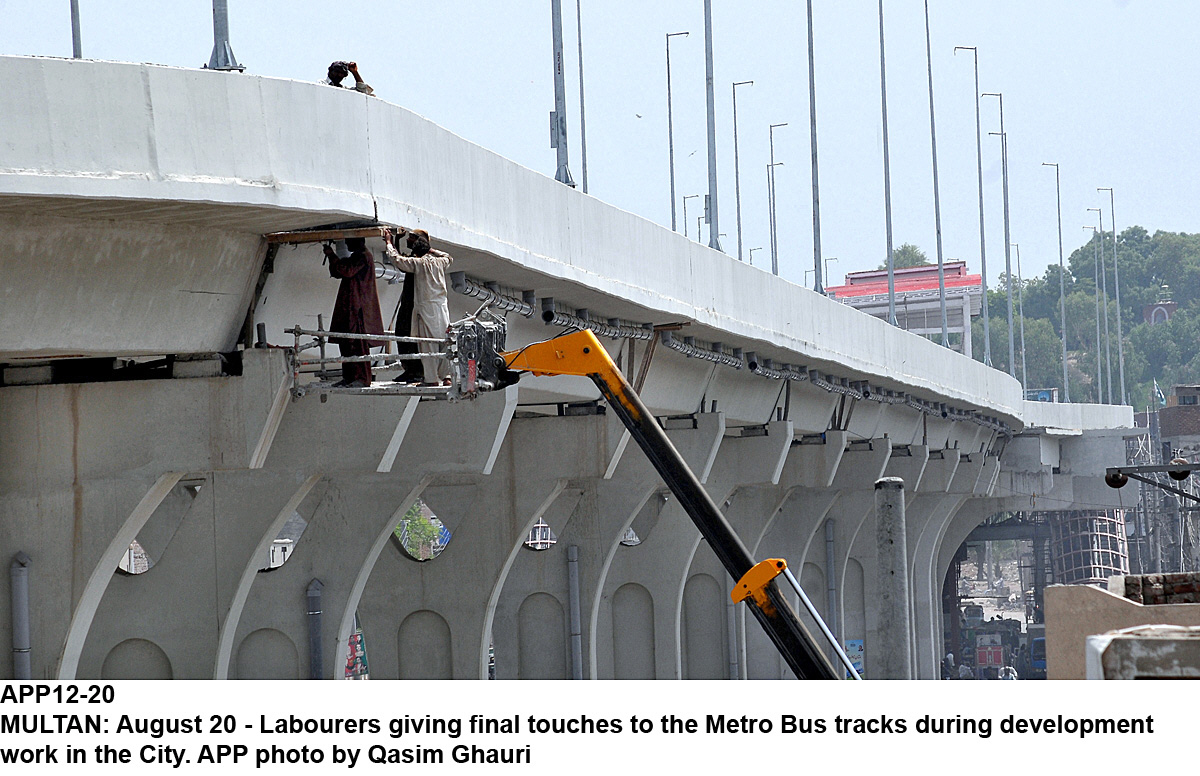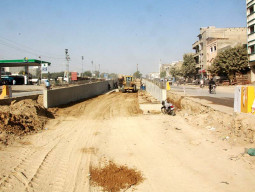
A five-member bench, headed by Chief Justice Anwar Zaheer Jamali, heard appeals on Wednesday on four separate but identical petitions moved by the Punjab government, Lahore Development Authority, the Punjab Mass Transit Authority and Nespak against the August 19 order of the Lahore High Court, suspending construction work within 200 feet of 11 heritage sites.
While hearing the appeals, the chief justice observed that the expert reports were conflicting. “The findings in both the reports are diametrically opposed to each other.”
On October 13, the chief justice appointed a commission consisting of Messers TYPSA-Asian Consulting Engineers (Pvt) Ltd and Prof Robin Coningham to re-verify the credibility of two environmental assessments of the project on the heritage sites that was conducted by the National Engineering Services Pakistan (Nespak) in July 2015 and February 2016.

Titled ‘Vibration Analysis of Viaduct Evaluation of Effects on Heritage Buildings’ the Nespak reports establish that there is no threat to any of the heritage buildings either during the construction of viaducts or during the operation of electric train.
However, Prof Robin Coningham, an expert in archaeology, disputed the Nespak claim and stated in his report that the execution of the project involved new constructions within two hundred feet of at least five immovable antiquities protected by the Antiquities Act.
On the other hand, the report compiled by Messers TYPSA-Asian Consulting Engineers (Pvt) Ltd endorses the Nespak reports and observes that the firm’s findings are ‘complete’ from a “structural point of view”.
Prof Coningham’s report observes that the train route contravened Clause 22 of the Antiquities Act of 1975. It also states that the train route flouted Clause 23 of the act.
It also observes that Nespak’s report also fails to take into account the effects of vibrations on two additional buildings likely to be affected by the project. These included the remaining Mughal reservoir which forms part of the Shalamar Gardens and protected by the Antiquities Act of 1975 and the Lakshmi building, protected under the Punjab Special Premises (Preservation) Ordinance of 1985.
On the other hand, Typsa endorsed Nespak’s report, stating that the approach adopted by Nespak was conservative that resulted in higher than actual vibration velocities. Nespak, it stated, “had rightly concluded that there would be no adverse effect on any of these sites.”
It concluded that the Nespak reports had complied with international codes and standards and the results were correct.
Published in The Express Tribune, December 15th, 2016.





















1713904359-0/burn-(1)1713904359-0-270x192.webp)












1713853507-0/MalalaHilary-(2)1713853507-0-270x192.webp)







COMMENTS
Comments are moderated and generally will be posted if they are on-topic and not abusive.
For more information, please see our Comments FAQ